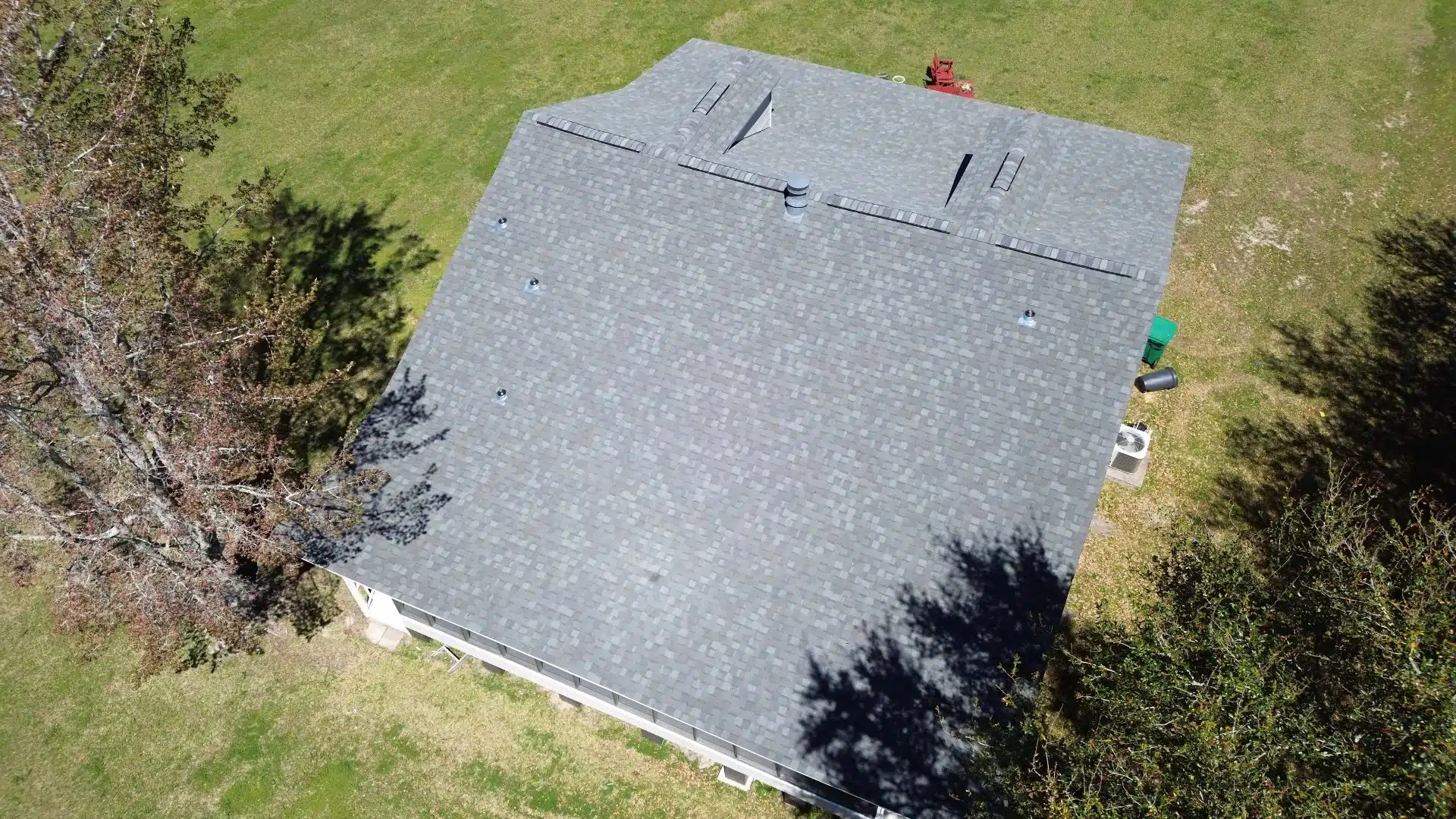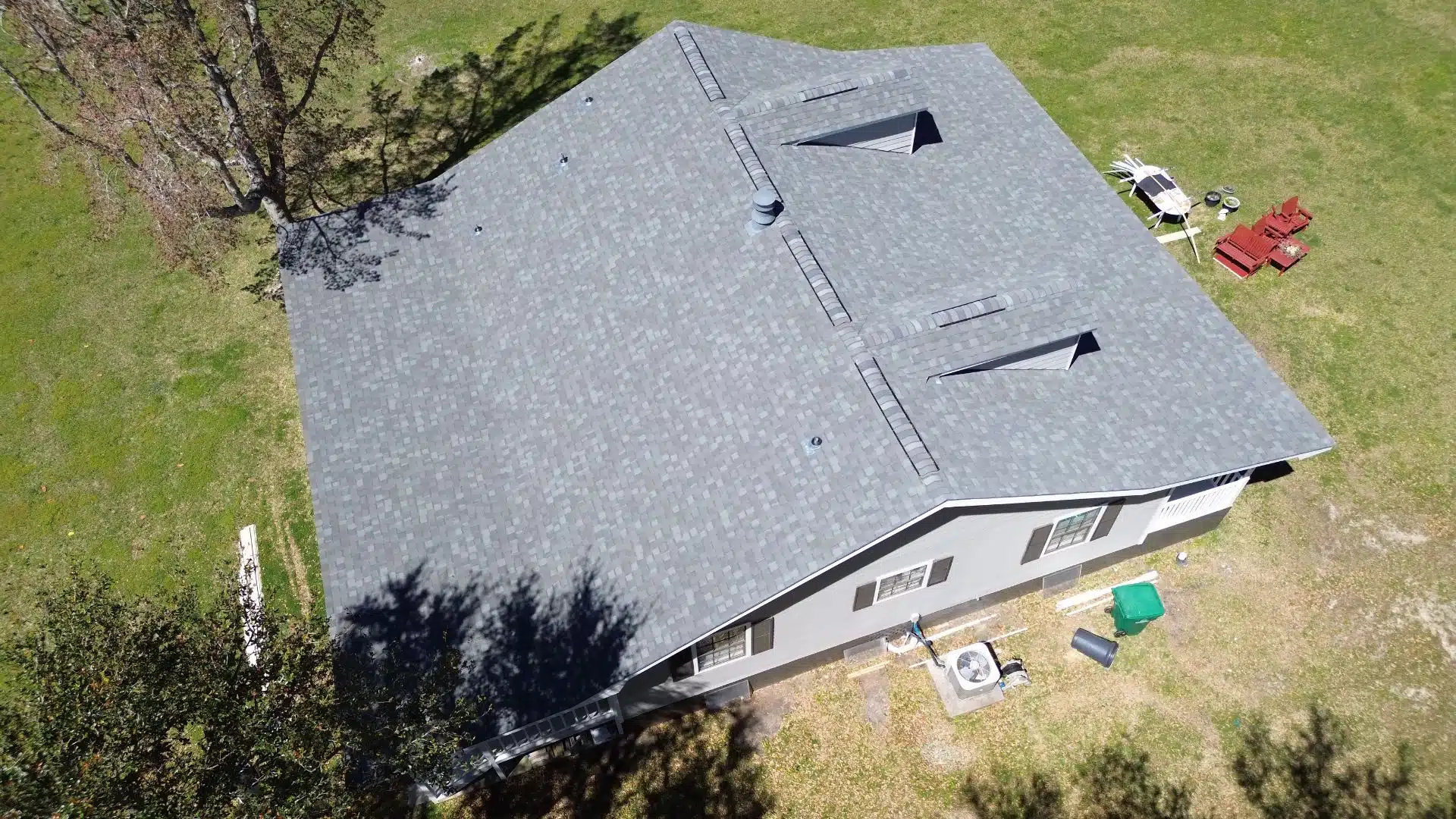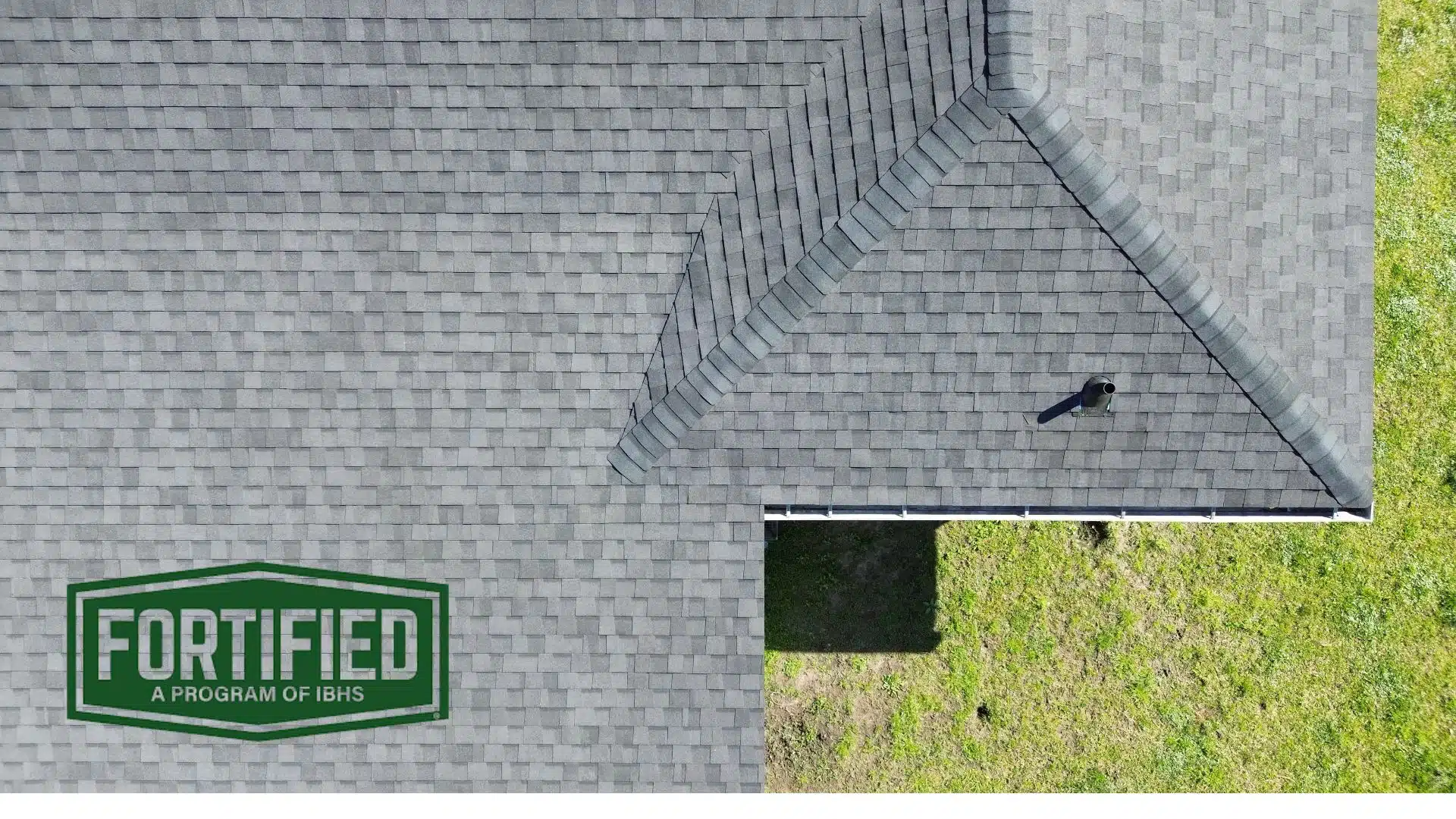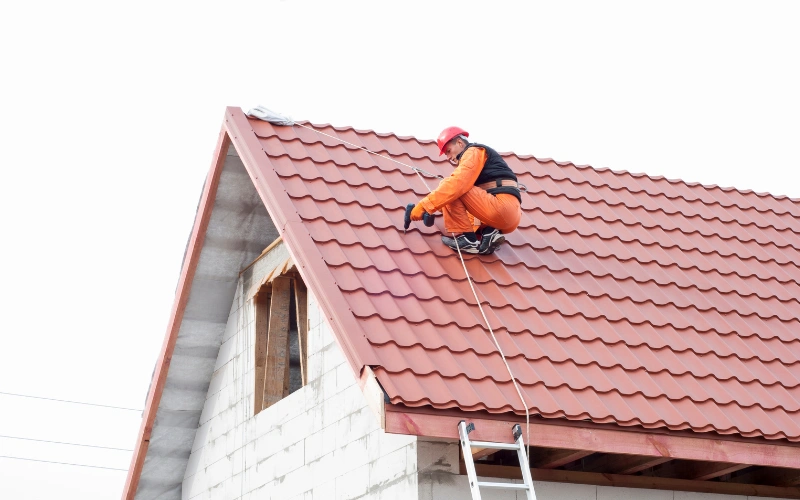When it comes to protecting your home from severe weather, your roof plays a crucial role in safeguarding both your property and your family. In areas prone to hurricanes, high winds, hailstorms, and heavy rainfall, the right roofing system can make all the difference. Enter the FORTIFIED Roof™, a specialized roofing system designed to provide unparalleled protection against nature’s fiercest forces. Developed by the Insurance Institute for Business & Home Safety (IBHS), FORTIFIED Roofs™ go beyond traditional roofing standards, offering enhanced features that significantly reduce the risk of damage during extreme weather events.
This blog will dive into What are FORTIFIED Roofs™, highlighting its key features and benefits. We’ll explore how it differs from conventional roofing systems and why upgrading to a FORTIFIED Roof™ on the MS Gulf Coast can give homeowners peace of mind and valuable protection against the elements. Whether you’re in a hurricane zone or experiencing more frequent storms, understanding the advantages of a FORTIFIED Roof™ is key to making an informed decision about your home’s long-term safety.
What is a FORTIFIED Roof™?
A FORTIFIED Roof™ is a roofing system meticulously designed and built to meet the rigorous standards established by the Insurance Institute for Business & Home Safety (IBHS). These standards ensure that the roof provides superior protection against the harshest weather conditions, such as hurricanes, hailstorms, and high winds. The goal of a FORTIFIED Roof™ is not just to withstand extreme weather but to dramatically reduce the risk of damage, keeping your home safe and secure during storms that would otherwise cause devastation.
Unlike conventional roofing systems, which are built to meet minimum building codes, FORTIFIED Roofs™ go above and beyond these standards. They incorporate enhanced materials and advanced installation techniques by a roofing company in MS Gulf Coast specifically engineered to provide an extra layer of defense against severe weather. Whether it’s strengthening the roof edges to resist wind uplift or using impact-resistant materials to withstand hail, a FORTIFIED Roof™ offers a level of protection that regular roofs simply can’t match.
In regions prone to severe weather, this extra level of protection is not just a luxury – it’s a necessity. By going beyond traditional building codes, FORTIFIED Roofs™ provide homeowners with peace of mind, knowing their homes are better equipped to handle the most extreme weather conditions. At Integrity Roofing Gulfport MS, we know how to guide you through every step to having a new roof replacement in Gulfport MS and surrounding areas.
Key Features of a FORTIFIED Roof™

A FORTIFIED Roof™ is built with several key features designed to provide exceptional protection against severe weather. These features work together to ensure that your home is more resilient, especially during storms that can cause significant damage to traditional roofs. Here’s a closer look at the specific elements that make a FORTIFIED Roof™ stand out:
Stronger Edges
One of the most vulnerable points of any roof is its edges. FORTIFIED Roofs™ address this by incorporating enhanced materials at the roof’s edges. For example, a wider drip edge is used along with a fully adhered starter strip, which helps prevent wind from getting underneath the roof and lifting it away. This reinforced edge significantly reduces the risk of roof failure during high winds, which are a common cause of roof damage during storms.
Sealed Roof Deck
To prevent water from entering your home during severe weather, FORTIFIED Roofs™ feature a sealed roof deck. This is done by applying tape or other approved materials along the seams of the roof deck. The seal keeps water from leaking into the home, even if the roof covering is damaged or blown off. This feature can reduce rainwater entry by up to 95%, offering vital protection against water damage when storms strike.
Enhanced Attachment
A FORTIFIED Roof™ uses 8D ring shank nails to attach the roof deck to the home’s structure. These nails offer double the wind uplift resistance compared to standard nails, providing a stronger hold that keeps the roof securely fastened in high winds. This enhanced attachment is crucial for withstanding the powerful gusts that come with hurricanes and other severe weather.
Secondary Water Barrier
Above the sealed deck, a secondary waterproof barrier is installed as an added layer of protection. This additional barrier helps to protect your home from water intrusion, even if the roof covering is compromised. With the secondary water barrier in place, the chances of leaks and water damage are significantly reduced, offering an extra layer of peace of mind for homeowners.
Impact-Resistant Materials
For homes located in areas prone to hailstorms, impact-resistant materials are a must. FORTIFIED Roofs™ are equipped with impact-rated shingles or coverings that can better withstand hail damage. These materials are specifically designed to resist dents and cracks from hailstones, ensuring that the roof remains intact and continues to protect the home, even during severe hail events.
High-Wind Rated Vents and Flashing
All the vents and flashing on a FORTIFIED Roof™ are required to meet high-wind resistance standards. This ensures that the roof’s ventilation system and flashing remain secure during strong winds and prevent water from infiltrating the home. The high-wind rated vents and flashing provide additional protection, keeping the roof’s integrity intact and reducing the likelihood of leaks.
These features collectively make a FORTIFIED Roof™ one of the most reliable roofing systems available, providing homeowners in MS Gulf Coast with enhanced protection from severe weather events and peace of mind during the storm season.
How Is a FORTIFIED Roof Different From a Conventional Roof?
FORTIFIED Roofs™ offer a level of protection far superior to that of conventional roofs Gulfport MS, especially in areas prone to severe weather. Below is a side-by-side comparison of the key features that differentiate a FORTIFIED Roof™ from a conventional roof:
| Feature | Conventional Roof | FORTIFIED Roof™ |
| Roof Deck Attachment | Standard nails or staples | 8D ring shank nails, evenly spaced for better resistance |
| Sealed Roof Deck | May have gaps or unsealed seams | Fully sealed with tape or approved materials to prevent water entry |
| Roof Edge Protection | Standard drip edge | Wider, reinforced drip edge and starter strip for better wind resistance |
| Water Barrier | Basic underlayment | Secondary waterproof barrier above the sealed deck for additional protection |
| Impact Resistance | Standard shingles | Impact-rated shingles or coverings (especially in hail-prone areas) |
| Vent & Flashing | May not be wind/water resistant | High-wind and water-resistant vents and flashing |
| Inspection & Certification | Not required | Third-party inspection and IBHS certification required for FORTIFIED status |
Certification and Maintenance
For a roof to be officially recognized as a FORTIFIED Roof™, it must be installed by a qualified contractor who follows the IBHS standards. After installation, the roof undergoes an independent inspection by a certified evaluator to ensure it meets the required standards. This inspection is essential for the roof to receive its FORTIFIED Roof™ designation.
The certification is valid for five years, after which it can be renewed following another inspection. Regular maintenance of the roof is highly encouraged, as it ensures continued compliance with the FORTIFIED standards and helps maintain the roof’s durability. Periodic inspections and maintenance can also extend the life of the roof, protecting your home from future weather events.
Benefits of a FORTIFIED Roof™
Enhanced Protection
A FORTIFIED Roof™ offers superior protection against severe weather, including hurricanes, high winds, hailstorms, and heavy rain. The robust design and use of high-quality materials significantly reduce the risk of damage from these extreme conditions, keeping your home safer during the worst storms.
Reduced Water Intrusion
The sealed roof deck and secondary water barrier offer an effective solution to prevent water from entering your home. Even if the roof covering is damaged or blown off, these features dramatically reduce the risk of water intrusion, helping to protect the interior of your home from costly water damage.
Insurance Discounts
Many insurance companies offer premium discounts for homes with a FORTIFIED Roof™. This is because insurers recognize the added value and protection that comes with the enhanced strength and resistance to severe weather, which ultimately lowers the risk of damage and costly claims.
Increased Property Value
A FORTIFIED Roof™ can increase your home’s property value, making it more attractive to potential buyers. Homes with this type of roof are seen as more resilient and safer, particularly in regions vulnerable to hurricanes and high winds. This can translate into a higher resale value and faster sales, should you choose to move in the future.
Peace of Mind
Above all, having a FORTIFIED Roof™ gives homeowners peace of mind. Knowing that your home is equipped with the best possible protection against severe weather brings confidence, especially in regions where storms are frequent. This added security can be invaluable, ensuring that your home remains safe, secure, and protected, no matter what the weather brings.
Resources for More Information
To learn more about FORTIFIED Roof™ standards and certifications, homeowners can explore the following resources:
- FORTIFIED Home Program – IBHS – Official website for the FORTIFIED Home Program, including detailed information on roof standards, benefits, and certification.
- GAF: FORTIFIED Roof – GAF’s official page outlining their FORTIFIED Roof™ offerings and advantages.
- Nationwide: Conventional Roof vs FORTIFIED Roof – A comparison between conventional roofs and FORTIFIED Roofs™, with a focus on insurance and storm protection.
These resources will help you understand the full scope of the FORTIFIED Roof™ system, from its design to its long-term benefits.
Conclusion
A FORTIFIED Roof™ provides an exceptional level of protection against severe weather, offering enhanced safety, durability, and peace of mind for homeowners. With features like stronger edges, sealed roof decks, and impact-resistant materials, a FORTIFIED Roof™ ensures your home stands resilient against the worst storms. Additionally, homes with FORTIFIED Roofs™ can enjoy insurance discounts, increased property value, and reduced risk of water damage during severe weather events.
Upgrading to a FORTIFIED Roof™ is a wise investment for homeowners in MS Gulf Coast looking to protect their property, save on insurance premiums, and increase the overall value of their homes. If you’re interested in learning more or want to explore the benefits of a FORTIFIED Roof™ for your home, contact a qualified roofing contractor in Gulfport MS today for an assessment and installation. Don’t wait until the next storm hits—make sure your home is equipped to handle whatever nature brings.
Frequently Asked Questions (FAQ)
1. What is the main difference between a FORTIFIED Roof™ and a conventional roof?
A FORTIFIED Roof™ is designed to meet the rigorous standards set by the Insurance Institute for Business & Home Safety (IBHS), providing superior protection against high winds, hurricanes, hailstorms, and heavy rain. Unlike conventional roofs, FORTIFIED Roofs™ use enhanced materials, better attachment methods, and additional protective layers, such as a sealed roof deck and secondary water barrier, to ensure a higher level of resilience.
2. How long is the certification for a FORTIFIED Roof™ valid?
The certification for a FORTIFIED Roof™ is valid for five years. After that, homeowners can renew the certification following a reinspection. Regular maintenance and periodic inspections are encouraged to maintain the roof’s integrity and ensure continued protection.
3. Will my insurance premiums be reduced if I install a FORTIFIED Roof™?
Yes! Many insurance companies offer premium discounts for homes with FORTIFIED Roofs™ because they are less likely to sustain damage during severe weather. This can lead to long-term savings on your homeowner’s insurance policy.
4. What types of materials are used in a FORTIFIED Roof™?
FORTIFIED Roofs™ use high-quality materials, including impact-resistant shingles, 8D ring shank nails for better attachment, and a secondary waterproof barrier. These materials are specially chosen to withstand extreme weather conditions, including hail, high winds, and heavy rain.
5. How can I get a FORTIFIED Roof™ installed on my home?
To install a FORTIFIED Roof™, you’ll need to hire a qualified contractor who is experienced with the IBHS standards. After installation, an independent inspection will be required to receive the official FORTIFIED Roof™ certification. Contact a local roofing contractor who specializes in FORTIFIED Roofs™ to get an assessment and start the process.




